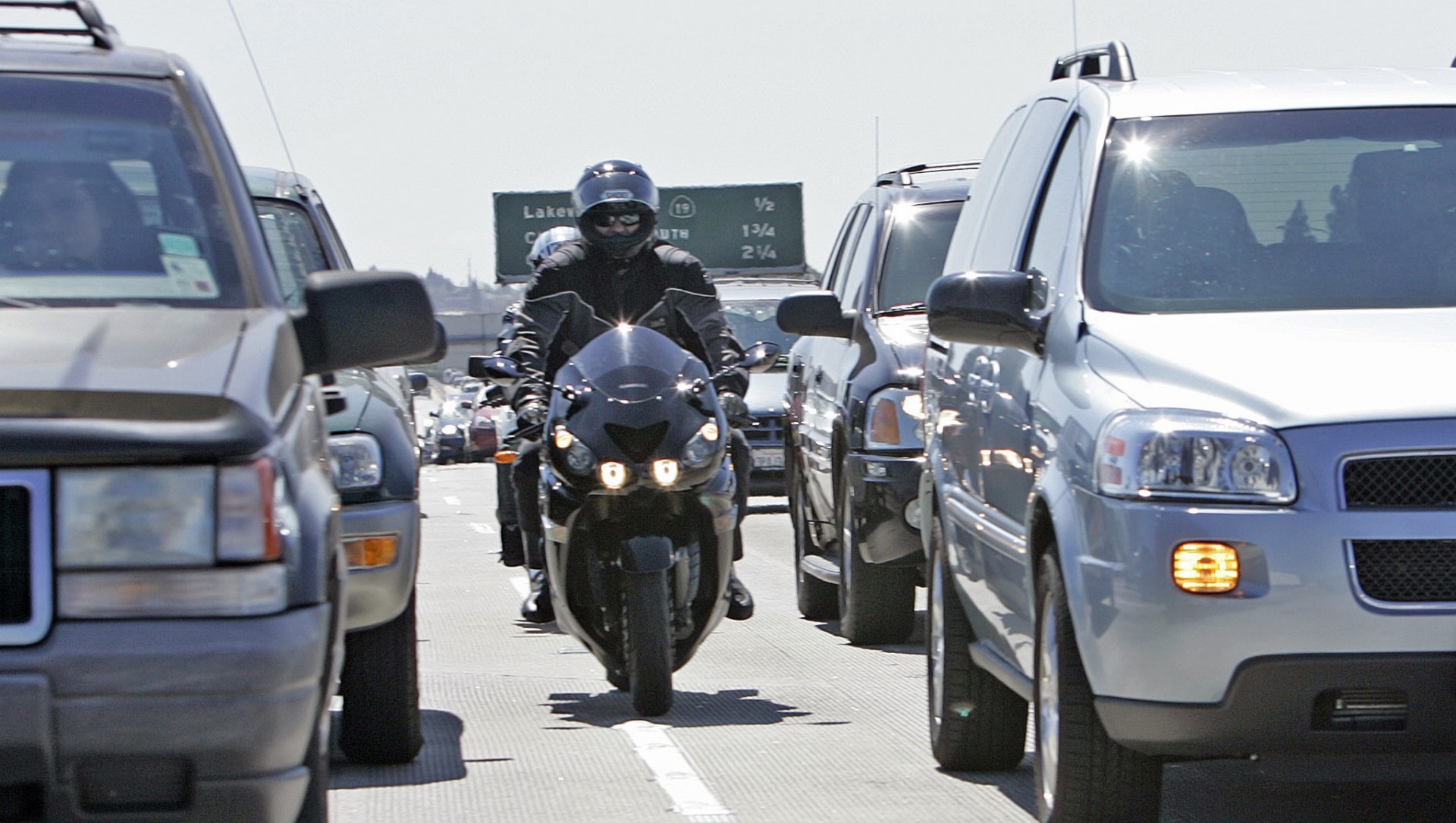Motorcyclists – even riders with 30 years experience – say they cut between cars in a maneuver called “lane splitting” on streets and highways because it puts them ahead of traffic and feels “empowering.” Do most bikers take care in making the move, though? Or is it just an arrogant and reckless roll of the dice?
On August 19, 2016, Governor Jerry Brown signed into law California Assembly Bill 51 legalizing the practice of lane splitting.
An amendment to the California Vehicle code was subsequently made:
Section 21658.1 is added to the Vehicle Code, to read:
21658.1. (a) For the purposes of this section, “lane splitting” means driving a motorcycle, as defined in Section 400, that has two wheels in contact with the ground, between rows of stopped or moving vehicles in the same lane, including on both divided and undivided streets, roads, or highways.
The law, with specifics still to be hammered out by the California Highway Patrol, went into effect Jan. 1, 2017.
Sometimes irreverently called lane-sharing, the controversial practice often sparks tension between motorcyclists who say driving between vehicles keeps them out of danger (they say is helps lessen congestion, too) and many motorists who say it is reckless and creates unnecessary risk and liability for everyone.
“Our primary concern is safety,” said Fran Clader, a spokeswoman for the California Highway Patrol in Sacramento. “We want to do whatever we can to keep motorcyclists and motorists safe. The crux of all this is all motorists need to share the road.”
A 2015 study by the Safe Transportation Research & Education Center, University of California, Berkeley, offers these interesting statistics, and much more:
Of the 5,969 collision-involved motorcyclists we studied, 997 were lane-splitting at the time of their collision (17%). Motorcyclists who were lane-splitting were notably different from those that were not lane-splitting. Compared with other motorcyclists, lane-splitting motorcyclists were more often riding on weekdays and during commute hours, were using better helmets, and were traveling at lower speeds. Lane-splitting riders were also less likely to have been using alcohol and less likely to have been carrying a passenger.
See the full UC Berkeley motorcycle lane splitting report.
